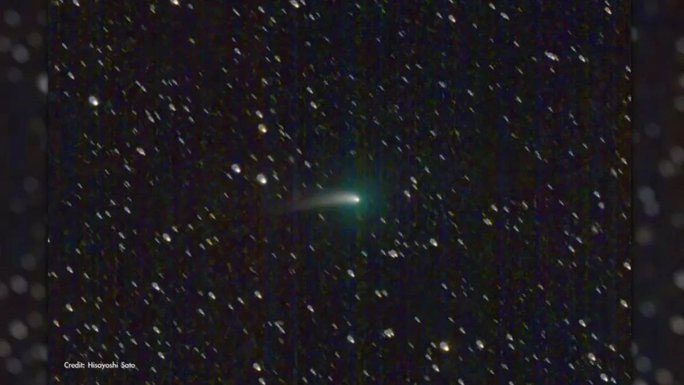In the skies above Earth in January 2023, for the first time in 50,000 years, a mysterious object became visible to humanity with the naked eye.
According to Space, this object is comet C/2022 E3 (ZTF), which will appear in the Earth’s sky with an eerie green hue, completely unfamiliar to modern humans, as the last time it was seen was when other human species like Neanderthals and Denisovans—our extinct relatives—were still roaming the Earth.
NASA forecasts that this comet will make its closest approach to the Sun on January 12, after which it will sweep past Earth and return to the more distant regions of the Solar System.

Comet C/2022 E3 (ZTF) captured from NASA’s video – (Photo: NASA/JPL-Caltech)
If it maintains its current brightness, it could be visible to the naked eye for several days during its journey from the Sun across the Earth. Even if it dims, C/2022 E3 (ZTF) can still be observed with binoculars and telescopes on several days around its perihelion passage.
NASA states that observers in the Northern Hemisphere will see the “friend” of the extinct human species in the morning as it moves northwest throughout January, while observers in the Southern Hemisphere will have clear visibility in early February.
The best time to observe in the Northern Hemisphere is January 21, when the Moon will retreat into darkness, allowing the light of the comet to shine through unobscured. Of course, one should hope for clear weather, as the comet could be obscured by thick clouds.
The location to find it is in the constellation Camelopardalis, where it will be nestled during its visit.
This comet has an orbit of up to 50,000 years, so those who regularly see it are not our young species, but rather Neanderthals or Denisovans, who appeared up to 800,000 years ago and only went extinct 30,000 to 50,000 years ago.
The designation C/2022 E3 (ZTF) indicates that it was officially confirmed by science in 2022. Initially, it was thought to be an asteroid in Jupiter’s orbit, but it quickly proved to be a comet by brightening—an indication of sublimation as comets approach the Sun.





















































